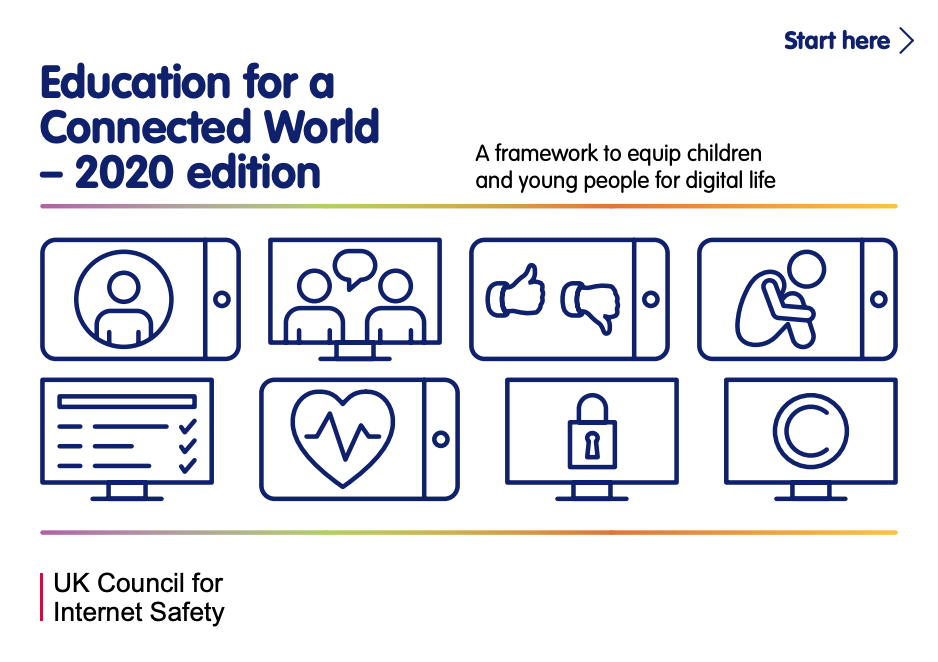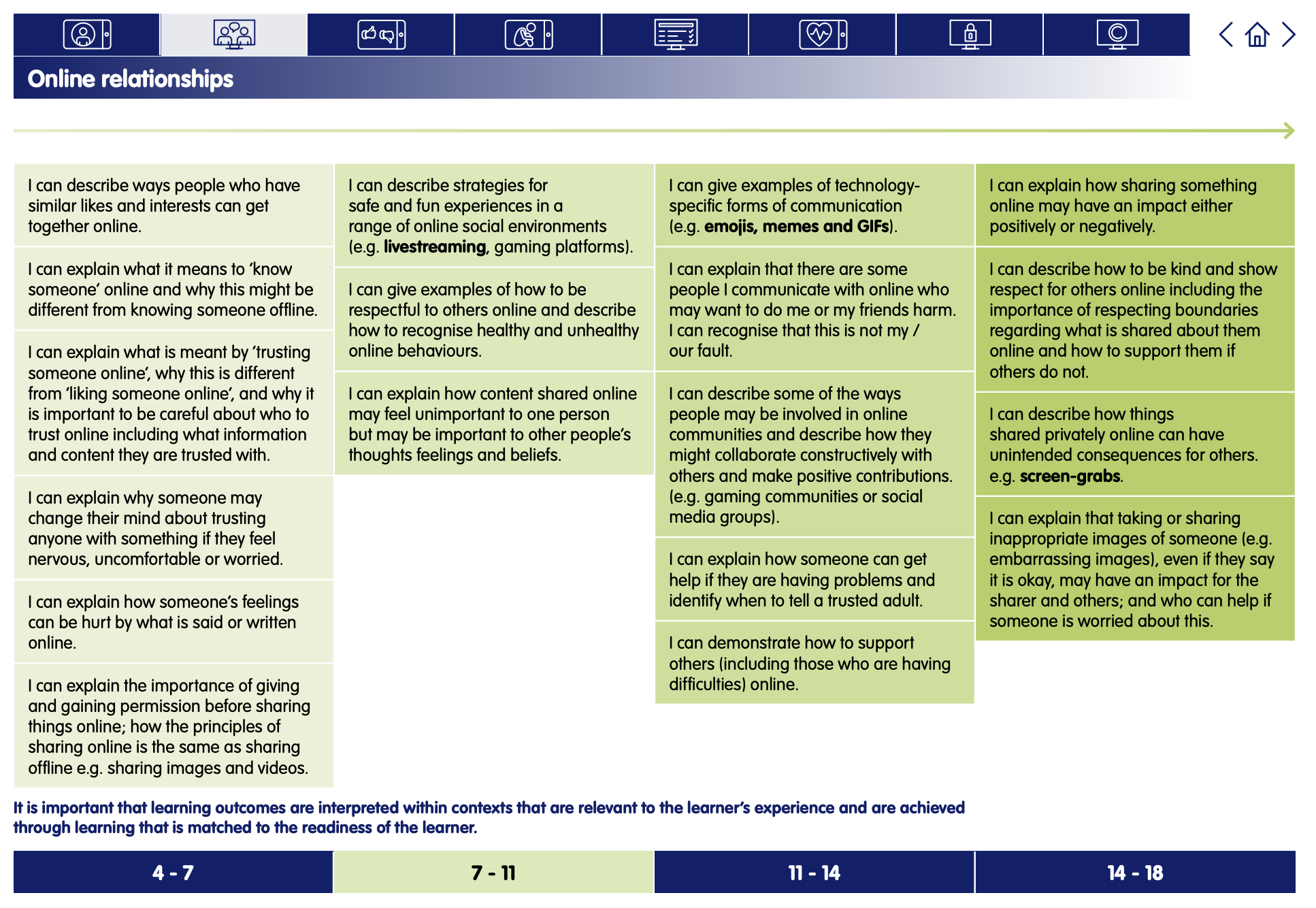Digital Friendships
Digital Literacy and Online Safety (Y6) - Lesson 4
A note about this lesson

This lesson is taken from Common Sense Education’s excellent Digital Citizenship curriculum. Their resources are shared for free under A Creative Commons Attribution- NonCommercial- NoDerivatives 4.0 International License.
You can find the original resources HERE.
Objectives
- Compare and contrast different kinds of online-only friendships.
- Describe the benefits and risks of online-only friendships.
- Describe how to respond to an online-only friend if the friend asks something that makes them uncomfortable.
Lesson 1 - Finding My Media Balance
Lesson 2 - You Won't Believe This!
Lesson 3 - Beyond Gender Stereotypes
Lesson 4 - Digital Friendships
Lesson 5 - Is It Cyberbullying?
Lesson 6 - Reading News Online
Links to Education for a Connected World.
This lesson from Common Sense Media's Digital Citizenship curriculum links to the following strands from the Online relationships section of the Education for a Connected World framework.
Introduction - Who Do You Chat With?
Kids make friends everywhere they go -- including online. But are all of these friendships the same? How can kids start online friendships and also learn ways to stay safe? Help your students understand both the benefits and the risks of online-only friendships.
Ask: Have you ever chatted with someone online? Who do you chat with? How often? Take turns sharing your responses with your partner. (Slide 4)
Invite students to share. Follow up with students who share by asking if the people they chat with are online-only friends or if they also know the friends in person.
Say: Today we're going to talk about online friendships, and some of the benefits and risks that go with them. Before we get started, can anyone tell me: What does the word "benefit" mean?
Invite volunteers to define benefit, and if necessary, clarify that it means something positive that you get from a situation -- in this case, online friendships.
Ask: What about the word "risk"? What does that mean?
Invite volunteers to define risk, and if necessary, clarify that it means something negative or dangerous that comes from a situation -- in this case, online friendships.
Compare and Contrast - Two Scenarios
Distribute one copy of the Sita's Online Friendships Student Handout to each student. Read aloud the directions for reading "Sita's Story." (Slide 5)
Give students seven minutes to read the two scenarios independently. If you are concerned about students' ability to complete the reading independently, consider reading it aloud while they follow along silently.
Ask: What are some words that you circled?
Invite students to share unknown words, and prompt other students to attempt definitions. If necessary, support discussion by providing an example sentence that includes the unknown word.
Draw a large Venn diagram on the board or project the Venn diagram from the student handout.
Say: As a class, we're going to use this diagram to compare and contrast the two scenarios that you just read about. Copy the class answers into the Venn diagram on your handout as we discuss. Put details that are only true about Scenario 1 in the left square. Details that are only true about Scenario 2 will go in the right square. Details that are true about both will go in the middle.
Ask: What happens to Sita in these two scenarios? How do her feelings change? Take turns sharing your ideas with your partner. (Slide 6)
Invite students to share. Prompt them to support their answers with details from the story. As students provide answers, add them to the appropriate place in the Venn diagram. If students make statements about CJcool11's gender or age, make sure to clarify that Sita has never seen or met CJcool11 in person and doesn't really know those details about him or her.
Evaluate - Benefits and Risks
Ask: What are some of the benefits and risks of these relationships for Sita? Take turns sharing your ideas with your partner. (Slide 7)
Invite students to share answers with the class. Add any new information to the diagram and add + or - symbols next to the benefits and risks. If necessary, make sure to clarify three important benefits and risks:
- Sita gets to learn about someone who lives in a different country and who has different experiences. (Kaia friendship) (+)
- Sita can talk to someone she can share things with. (Both friendships) (+)
- Sita has never seen or spoken to CJcool11. When you have only chatted online with someone, you don't really know if they are who they say they are. (CJcool11 friendship) (-)
Say: Sita does not know for sure if CJcool11 is who he or she claims to be. This means Sita should be careful about what she shares. She should not share any private information. Private information is information about you that can be used to identify you because it's unique to you (e.g., your full name or your address). (Slide 8)
Explain to students that sharing private information with online-only friends is risky because such friends may have a different age, gender, or personality than they led you to believe. Their intentions for the friendship might also be different from what they say. They may also want to use your private information in ways that negatively impact you. Students should "play it safe" and always protect private information, especially from online-only friends.
Ask: So, what are some ways that you could respond if an online-only friend asks you a question you don't feel comfortable answering? What could you say back? Take turns sharing your ideas with your partner. (Slide 9)
Invite students to share their ideas with the class, and capture ideas on the board. Answers could include:
- Say it's a personal preference: "Sorry, I prefer not to give out information like that over the internet."
- Change the subject: "Oh man, it better not rain today."
- Say what really matters: "It doesn't matter what the name of my street is. What matters is that it's cool."
Plenary - Finish the Story
Distribute one copy of the Finish the Story Student Handout to each student and read the directions aloud. Allow students the remaining time to write. (Slide 10)
Have students turn in their assignments.
Have students complete the Lesson Quiz. Send home the Family Activity and Family Tips.


